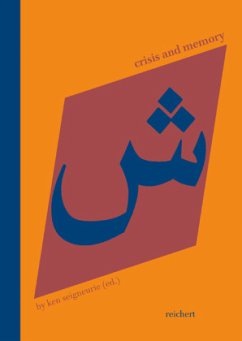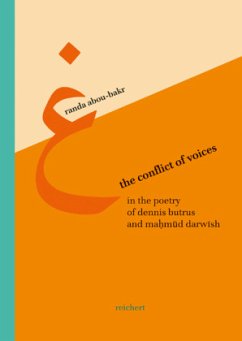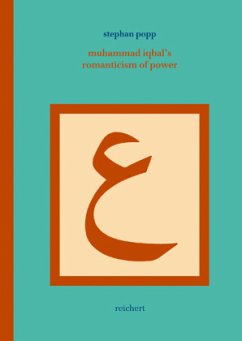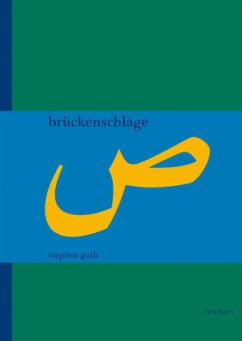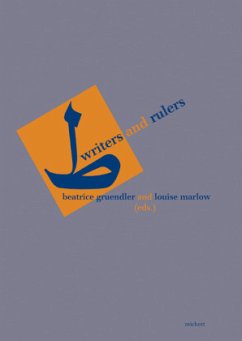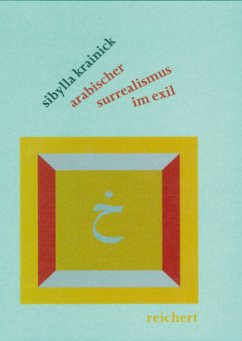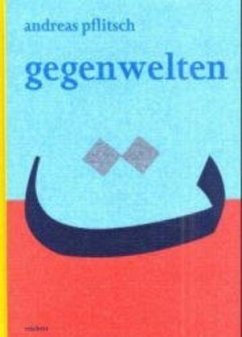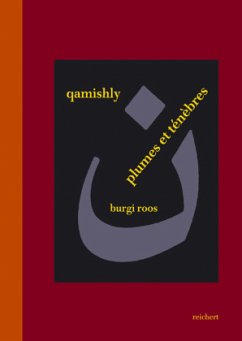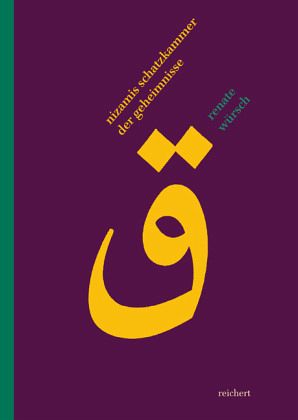
Nizamis Schatzkammer der Geheimnisse
Eine Untersuchung zu Makhzan ul-asrar. Habil.-Schr.
Versandkostenfrei!
Versandfertig in 2-4 Wochen
35,00 €
inkl. MwSt.

PAYBACK Punkte
0 °P sammeln!
Gegenstand dieser Untersuchung ist das didaktische Mathnawi Makhzan ul-asrar ("Die Schatzkammer der Geheimnisse"), das erste große Werk des persischen Dichters Nizami (gest. 1209). Im Blickpunkt des Interesses stehen zunächst Fragen der Werkgeschichte: Datierung, Widmungsträger, Hinweise auf Nizamis Biographie und die poetische Tradition, in der Makhzan ul-asrar steht, ferner die Rezeption des Werks im persisch-türkisch-indischen Raum sowie im europäischen Westen. Anschließend stellt die Studie anhand von Beispielen den formalen Aufbau dieser Dichtung Nizamis dar und analysiert die in Ma...
Gegenstand dieser Untersuchung ist das didaktische Mathnawi Makhzan ul-asrar ("Die Schatzkammer der Geheimnisse"), das erste große Werk des persischen Dichters Nizami (gest. 1209). Im Blickpunkt des Interesses stehen zunächst Fragen der Werkgeschichte: Datierung, Widmungsträger, Hinweise auf Nizamis Biographie und die poetische Tradition, in der Makhzan ul-asrar steht, ferner die Rezeption des Werks im persisch-türkisch-indischen Raum sowie im europäischen Westen. Anschließend stellt die Studie anhand von Beispielen den formalen Aufbau dieser Dichtung Nizamis dar und analysiert die in Makhzan ul-asrar angewandten rhetorisch-poetischen Verfahren, namentlich die reiche und schwierige Metaphorik, die ein bestimmendes Merkmal dieses Erstlingswerks ist. Weitere Schwerpunkte der Untersuchung sind die wechselweise beschreibend-reflektierende, homiletische und narrative Textstruktur des Werks, Nizamis virtuose und Interaktion mit dem Rezipienten bedingende Technik der Bildung von Assoziationsketten durch Schlüsselbegriffe und die didaktischen Hauptthemen des Werks (Lob des Propheten, Rang der Dichtkunst, die Reise ins eigene Herz, Wahrung der Gerechtigkeit, Aufforderung zum Weltverzicht, apokalyptische Vision und Endzeiterwartung). Den Abschluss der Studie bildet eine kommentierte Übersetzung der zwanzig von Nizami in Makhzan ul-asrar eingefügten Gleichniserzählungen unter Berücksichtigung der Textkritik und Motivgeschichte.
Makhzan ul-asrar steht, vor allem was die westliche Rezeption betrifft, eher im Schatten der übrigen Werke Nizamis und wird oft als Entwicklungsschritt hin zu seinen großen Epen betrachtet. Ziel dieser Studie ist es, einen neuen Zugang zu dieser so viele Reichtümer bergenden "Schatzkammer" zu eröffnen und die Bedeutung, die Nizamis erstes Mathnawi für dessen künstlerische Entwicklung sowie für die persische didaktische Dichtung überhaupt besitzt, darzulegen.
Makhzan ul-asrar steht, vor allem was die westliche Rezeption betrifft, eher im Schatten der übrigen Werke Nizamis und wird oft als Entwicklungsschritt hin zu seinen großen Epen betrachtet. Ziel dieser Studie ist es, einen neuen Zugang zu dieser so viele Reichtümer bergenden "Schatzkammer" zu eröffnen und die Bedeutung, die Nizamis erstes Mathnawi für dessen künstlerische Entwicklung sowie für die persische didaktische Dichtung überhaupt besitzt, darzulegen.
Dieser Artikel kann nur an eine deutsche Lieferadresse ausgeliefert werden.



